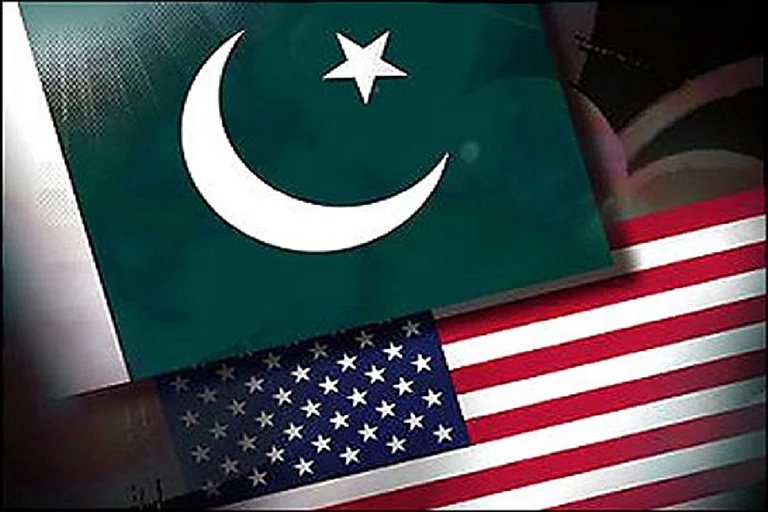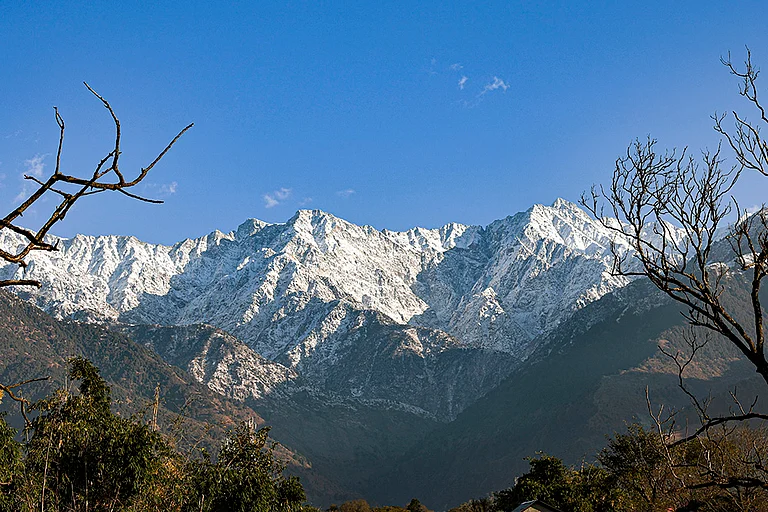When an interview of Indian Army officer, Major Leetul Gogoi, was being aired on every TV channel on Tuesday evening, a legislator of the Jammu and Kashmir Assembly, Engineer Rashid, put his TV set on mute. Alone in his official quarters in Srinagar—he keeps no security guard—Rashid is livid as he wonders how a government, which moves the International Court of Justice (ICJ) to make Pakistan uphold human rights in the Kulbhushan Jadhav case, rewards an officer responsible for a grave violation of human rights in Kashmir.
“It is a humiliation for all Kashmiris and undermines mainstream politics even more,” says Rashid, who claims he too was used as a human shield and bonded labour by the army in the past. Former chief minister Omar Abdullah is also similarly outraged. “In future, please don’t bother with the farce of a military court of inquiry. Clearly, the only court that matters is the court of public opinion. International conventions such as the Geneva/Vienna ones only count when India can accuse others of violations. Do as we say, not as we do,” says the National Conference (NC) leader, mocking the way the Centre responded to the human shield incident, while taking Pakistan to international court.
Earlier, a case of alleged human rights violation involving its men would often lead to the Indian Army promising to set up a court of inquiry. This time, the officer was rewarded even as the case against him was pending with the police and in the army’s court of inquiry, undermining the credibility of government INStitutions. The anger is palpable. Junaid Azim Mattu, NC spokesman, was blunt. “Gandhiji must be turning in his grave watching you celebrate a war criminal, an utter coward as a hero. No courage in using a human shield!” he said.
For human rights activist Parvez Imroz, the reward and “chest-thumping” over it by national politicians and the national media, is an indication of the way the country is changing. “During the Congress regime, worse things happened in Kashmir,” says Imroz. “But the Congress wouldn’t publicly condone them as they wanted to maintain India’s image of being a soft state.” Though the old, image-conscious approach stays on with a few liberals who are worried about the BJP-led government’s approach in Major Gogoi’s case, Imroz points out they are more concerned with what this would do to the image of their country. “Liberals in India have no sympathy with Kashmiris. They have justified even the widely condemned Kunan-Poshpora mass rapes,” he says.
Human Shield: An Old Practice
This is not the first time the army has used human shields in Kashmir. “The practice has been justified earlier by the army and the Indian State under the overall impunity granted by the Armed Forces (Special Powers) Act (AFSPA) against the prosecution of army personnel. But now, post the Major Gogoi case, the army has got even moral impunity while operating in areas like Jammu and Kashmir,” concludes the rights activist.

According to Rashid, using civilians as human shield during counter-insurgency operations was the norm from 1989 to 2003 in the picturesque countryside of north Kashmir, after which it has been resorted to only occasionally. Rashid, who hails from Mawar village in Langate constituency of frontier Kupwara district that he has been representing as an independent MLA since 2008, recalls he was used as a human shield by the army during a gunfight with militants in 1997.
“The award to Major Gogoi has brought all those bitter memories back,” he says. “It was in the evening of July 19 that year. The date is etched on my mind and will stay there forever.” Rashid was outside his house, sitting at a village grocery along with other villagers, discussing international affairs and the politics of Kashmir, as is common practice throughout the rural and urban landscapes of Kashmir.
The discussion, however, came to an abrupt end when the villagers heard the staccato noise of fierce firing somewhere in the vicinity. The villagers had then rushed towards their houses to save themselves, in quite sharp contrast to what would be expected today in rural Kashmir, especially in the south, where people don’t run away on hearing gunshots anymore. Nowadays they rush towards the sound of gunfire and throw stones at the army at the encounter sites, to thwart their operation. This indicates the inexorable mainstreaming and rapidly growing popularity of armed militancy—more significant than ever before, as the estimated number of militants today is merely 200, while it was 10,000 in 1997.
Spontaneous mobilisations of locals to hamper counter-insurgency operations started after 2008—the year large-scale protests broke out in Kashmir following a long hiatus since the crackdowns of the 1990s, forcing the government to try countering the stone-pelting protesters with bullets and pellets. Around 60 people were killed by the security forces during the 2008 protests, but just two years later, mass protests erupted once again after a series of killings of youngsters by security forces and the Machil fake encounter on April 30, 2010—in which the army claimed to have killed three unidentified Pakistani infiltrators in the Machil sector along the LoC in Kupwara district.
A few days after the alleged encounter, villagers from Nadihal in Sopore, 70 km northwest of Srinagar, filed a missing-persons report for three young men. The investigation proved that the three were lured to the LoC with the promise of jobs and then killed at Machil. Omar, the then CM, repeatedly held the Machil encounter responsible for the 2010 protests, in which 112 protesters were killed in firing by the police and paramilitary forces.

Last year, the Valley witnessed protests on an unprecedented scale after the killing of 22-year-old Hizbul Mujahideen commander Burhan Wani. In the unrest that began then and continues in the form of students’ protests, around 90 people have been killed so far and nearly 15,000 injured in the bullet and pellet firing by paramilitary forces and the police. This history of mass agitations by youngsters taking on the government forces in the streets has given impetus to the phenomenon of unarmed villagers trying to disrupt army operations—a far cry from what the mood was in the 1990s in Mawar, which only knew fear of the army then. Being close to a forested area, Rashid’s village was often used as one of routes for militants entering the Valley from across the LoC.
“After hearing the gunshots that evening in 1997, some villagers wanted to stay put on the lawn of our house,” recalls Rashid. “I was outspoken, so they thought they could be safe in our house. But nothing could save them that day. The army men entered the house and, pulling my fiancé by the hair, threw her on the ground. They thrashed the other villagers, covered my head with a cloth and took me along to a cooperative shop at the edge of the village. There they removed the cloth from my head. Then the army took me, a baker Jamal Dar and two forest guards—Muhammad Sultan and Ghulam Muhammad—to the encounter site. We were used as a human shield. I was kept in that position for 27 hours. We were let off only after the militants were killed.”
According to the Langate legislator, most Kashmiris would have forgotten of this shameful practice, but tying 26-year-old Farooq Ahmad Dar on April 9 to the army jeep by the major has revived old memories.
Rashid also recalls that people in north Kashmir used to be taken for bonded labour and forced to clear the road for the army. The legislator has approached the State Human Rights Commission seeking compensation for the “bonded labour” he claims to have done for army.

The Major’s Defence
Major Gogoi of 53 Rashtriya Rifles (RR), in a first in the history of the Kashmir conflict, addressed a press conference in his own defence, alleging that Dar was an “instigator”. According to Gogoi, on April 9, when Budgam was going for bypolls, he got a call from an ITBP officer in charge of Utligam. “Around 10.30 am, we received another distress call from the ITBP, informing us about 1,200 people laying siege to the Utligam polling station. They were trying to burn down the polling station by hurling Molotov cocktails,” he said. “We rushed to Utligam, located 1.5 km from Gondipora. When we arrived, the crowd, including women and children, attacked us with stones. Unable to move out of our vehicles, we announced on megaphones our intent to rescue the election staff and the ITBP personnel stuck inside the polling station. But the crowd paid no heed.”
The major continued: “I saw a short man, Farooq Ahmad Dar, standing around 30 metres from my vehicle and told my team to catch hold of him. Dar was at the scene of violence even though he lived at Chill, 20 km away. The army personnel moved towards the polling station with the help of a mine-protected vehicle. Once we got inside, I rescued four civil polling staff, seven ITBP personnel and one J&K police constable. As we were leaving the polling station, our vehicle got stuck in the mud and the mob started throwing stones at us. Farooq tried to flee on a bike, but we caught him. When the crowd refused to relent, an idea struck me and I decided to tie Farooq to the bonnet of our vehicle. As he was being fastened to the jeep, the stone-pelting stopped briefly, giving us a window to move out of the area. I did it to save the local people. Had I opened fire, there would have been more than 12 casualties. With this idea, I saved many lives.”
Bravery or Cowardice?
Whether or not the major’s action saved lives, the army’s decision to reward him has shocked and shattered the man he tied to the jeep, who dismisses the probe as a farce. “Is tying a person to a military jeep an act of bravery?” asks Dar, alleging that the major is lying. According to Dar, after he cast his vote, he was on his way to a neighbouring village to offer condolences, when the army men pulled him down from his bike, thrashed him and then tied him to the jeep’s bonnet.
“An army officer made a video of this on his mobile, saying your father will see it at home,” says Dar, who lost his father a few years ago. “I was tied to the jeep from 11 am to 5 pm. Even in the army camp, I was tied to a chair.”
Dar points out that he hasn’t been called by the police or the army for his side of the story. “Even the local police didn’t call me for a statement,” he says.
By Naseer Ganai in Srinagar


























